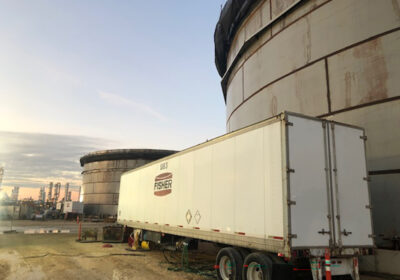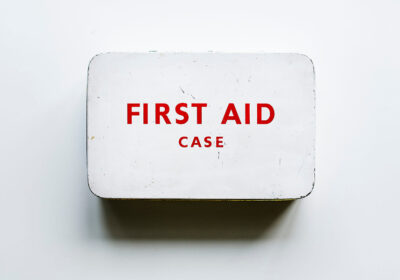TANK CONSTRUCTION’S STEALTHY THREAT
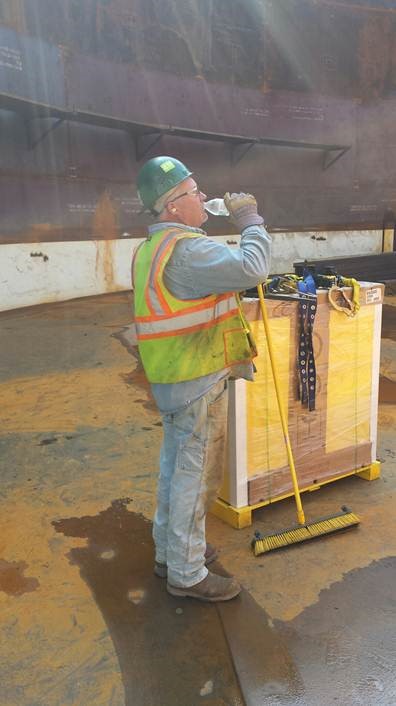
Summer’s brutal heat has been described as “Nature’s stealth killer. It’s not always the medical examiner’s prime suspect. And the deadly toll it exacts often becomes clear only well after it has left the scene.” (Kansas.com)
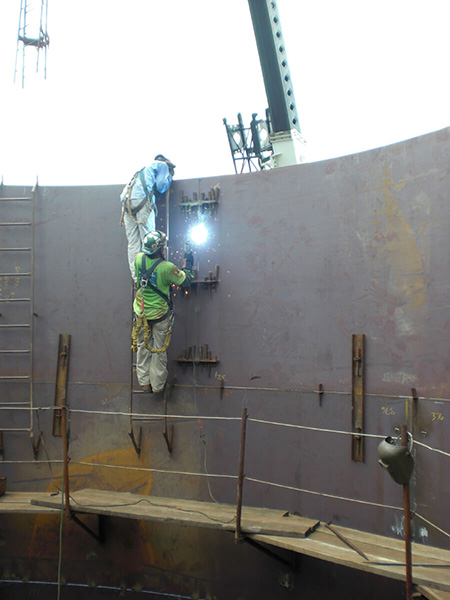
That description makes it clear why heat is such a danger. It’s silent; it’s stealthy, and sometimes it’s hard to tell if you’re just miserable or on the brink of a serious heat-related health situation. It’s a well-documented threat for those working in heavy construction. Our field erected tank construction crews discuss heat stress and the related dangers frequently during the summer months. However, this stealthy threat applies to nearly everyone!
From 2010 to 2013, according to the National Weather Service, a total of 592 people died as a result of extreme heat. It’s difficult to get a true picture of heat related fatalities; during times of extreme heat, deaths related to chronic conditions like respiratory ailments and heart disease increase. According to George Luber, an expert on heat at the Centers for Disease Control and Prevention, fatalities related to or caused by heat are seriously underestimated. Hyperthermia, or severe over-heating of the body, can only be identified as the cause of death if hospital or emergency personnel measure a body temperature of about 105 degrees or higher at or immediately after the time of death. Many times victims of hyperthermia are found alone, after the fact, and the cause of death is not recorded as hyperthermia. Randy Hanzlick, vice president of the National Association of Medical Examiners and chief medical examiner of Fulton County, Ga, said there are “a lot of gray zones” surrounding heat related deaths. (Kansas.com)
OF COURSE, YOU’VE HEARD IT BEFORE, BUT TAKE IT SERIOUSLY
Even with the likely underestimation of heat related fatalities, heat is still one of the top weather related killers in the U.S. While extreme heat can be a “Stealth killer,” much of the damage that extreme heat can do is preventable if the proper precautions are in place.
If you work in the tank industry, or in any other area of the construction industry, you have heard about heat stress over and over. For those who are regularly exposed to OSHA safety training and on-the-job safety programs, this is not new information. However, sometimes complacency is more dangerous than anything else on the construction site. With temperatures topping 100 degrees in many parts of the country, NOW is the time to review heat safety information and make YOUR plan to prevent heat related illness.
For our tank erection crews, having a plan to manage the heat is absolutely vital. Can you imagine how hot it can get in August inside a welded steel tank? But it’s not just tank builders and other people in heavy construction who need to have plan for managing extreme heat. Weekend warriors are especially vulnerable – if you work in air conditioned spaces all week and then tackle a big yard project on a hot Saturday, your body is not prepared and you may put yourself at risk of serious heat related illness. Kids doing sports activities in the summer heat are at risk as well – it’s not enough to send them with a water bottle; it’s important to educate them about the warning signs of severe heat stress and what to do about it. Who’s most at risk? The elderly, the very young, and anyone with chronic health conditions like respiratory problems and heart conditions.
IT CAN HAPPEN TO YOU, EVEN THOUGH YOU’RE A PRO

Even if you are accustomed to the heat, don’t take your health for granted. Being used to the heat does not make you Superman. According to Sqwincher, a rehydration product developed for the construction industry, 500,000 people are hospitalized every year for dehydration. It can happen to anyone, and more quickly than you’d think.
Being prepared for the heat means staying well hydrated. But staying hydrated doesn’t mean simply grabbing a bottle of water or sports drink when you’re in the heat and you’re feeling thirsty. Hydration must happen before, during and after exertion. You’ve heard the saying – by the time you feel thirsty, you’re already dehydrated. Don’t wait till then! Be intentional about hydrating before you go out in the heat, and for the best hydration, avoid caffeine, alcohol and drinks with a lot of sugar.
Here at Fisher Tank Company, our fabrication shop teams and our tank construction crews address the dangers of heat stress through education, training, daily monitoring and specific hydration supplies. Our shops and job sites are equipped with a specially formulated electrolyte drink mix and even electrolyte replacement popsicles to help ensure that everyone stays hydrated. Many hydration products such as Thorzt, an Australian product, recommend programmed hydration, in which workers consume a specific quantity of the electrolyte enriched drink on a prescribed schedule. The amount of liquid and the timing can vary depending on the conditions, but the idea is that the scheduled intake of the drink helps prevent dehydration. This method could help anyone manage hydration!
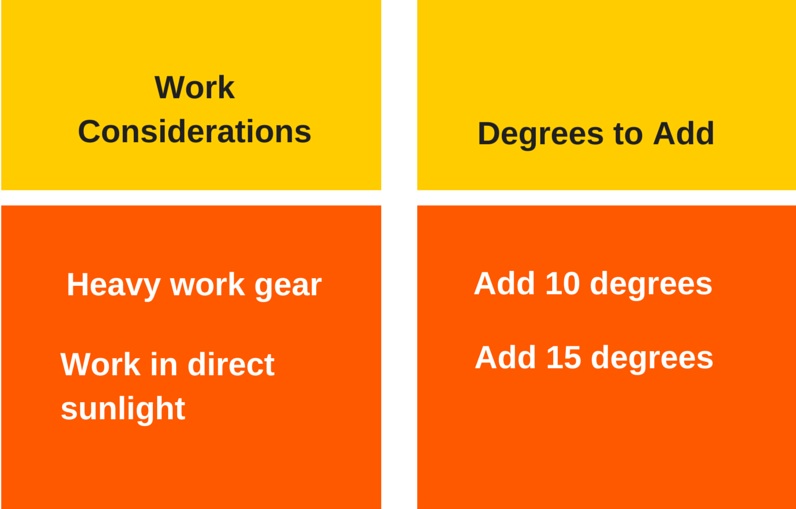
IT’S NOT JUST THE TEMPERATURE!
Higher temperatures are not the only factor in heat stress. What you’re wearing can make a tremendous difference, as you can see in the chart to the right. For our tank construction crews, PPE is vital to their safety, but can also create another level of danger. But it’s important to realize that if you’re working in coveralls, heavy boots, hard hats, masks or other personal protective equipment, you’re at higher risk. PPE can add as much as 10 degress to the heat index. In addition, if there’s no cloud cover, the potential for becoming overheated increases, upping the heat index by as much as 15 degrees.
THE HEAT INDEX ISN’T JUST FOR THE 11:00 NEWS
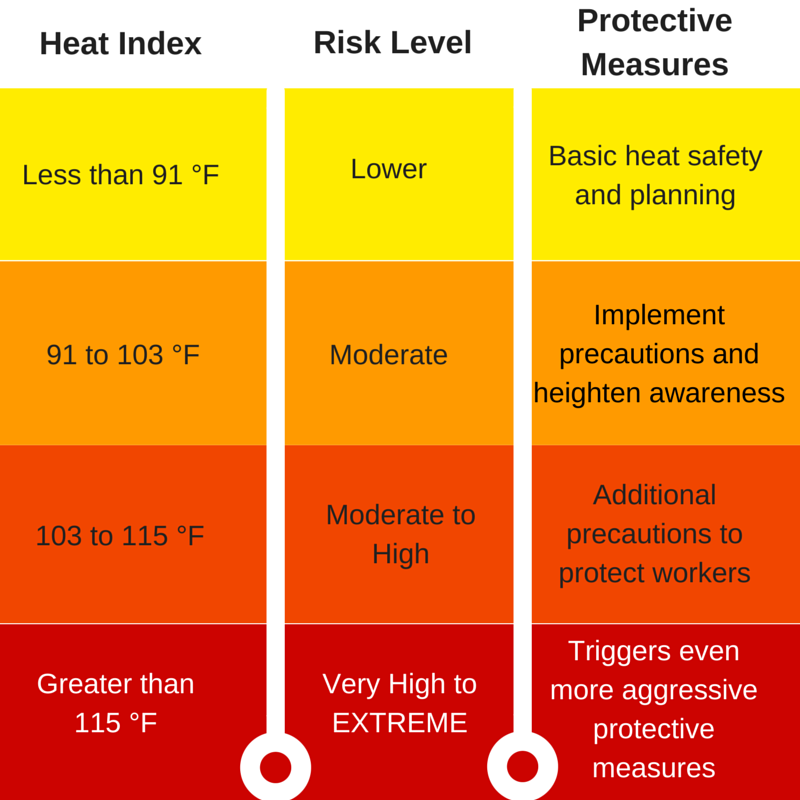
Monitoring the heat index is an important part of preventing heat related illness. You’ve heard the term a million times, but do you think about how the heat index really impacts you? The heat index is a measurement that takes into account ambient temperature AND humidity, and it tell us what it really feels like outside. 90 degrees in 40% humidity feel very different from 90 degrees in 90% humidity! The chart at right demonstrates how slight increases in the heat index can affect us.
For heat index info on the spot, OSHA has introduced a handy new app to help monitor hot weather conditions. The app helps interpret heat index information for maximum safety in hot conditions. OSHA suggests developing a consistent work/rest schedule during times of extreme heat. Sticking to a work/rest schedule can help monitor and maintain safe body temperatures and can help prevent severe heat stress. The OSHA Heat Index App can help you and your team monitor conditions and adjust your actions to keep working safely and effectively in the heat.
HEAT SAFETY IS WORTH YOUR TIME!
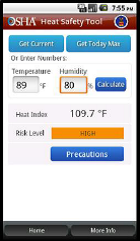
Extreme heat is no joke. Take the time to think about your heat related illness prevention plan, whether you are going to be mowing the lawn or welding steel tank shells.
What do you do to PREPARE for working in extreme heat?
During the workday, how do you manage your heat stress?
After a day working in extreme heat, how do you feel? How can you tell when you’ve gotten too hot, dehydrated, etc.?
What do you do specifically to recover after a day of working in the heat?
For more information about heat related illnesses, heat safety, hydration management and other topics related to heat stress, check out these resources:
Click here to read more of our blogs


